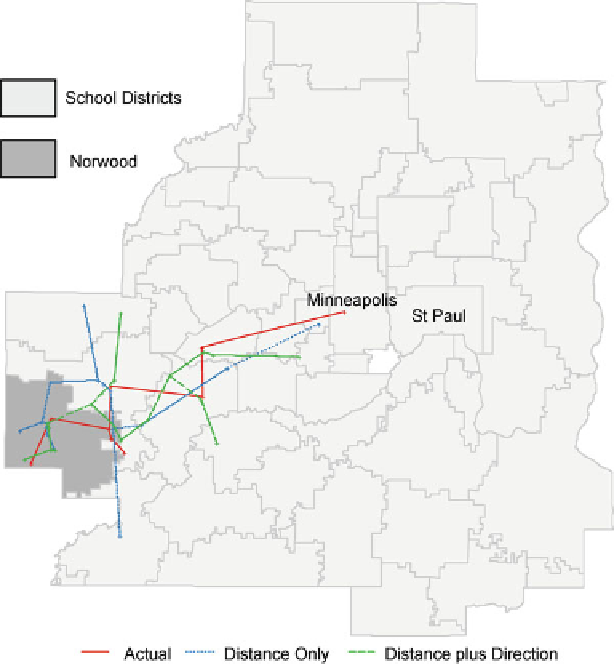Geoscience Reference
In-Depth Information
Fig. 6.7
Intraurban migration from Norwood
of this bias. Even then, underestimation of sprawl in suburban and exurban locales
points to a prolonged housing search, which implies that people who live in areas
with low population density tend to move less frequently and longer distances (see
also Van der Vlist et al.
2002
).
This work provides a basis for more complicated, utility-comparison-based
migration models of housing search strategies. The modified intervening oppor-
tunity theory as instantiated in an agent-based model and empirically calibrated
with migration chains captures fundamental features of the migration process
and can complement deeper investigation of specific factors and locales. Alone,
they can help capture key migration dynamics in the absence of many kinds of
information usually needed to understand migration, creating a simple and powerful
perspective on migration and urbanization. When combined with other data, they
provide part of the foundation of a broader and deeper examination of intraurban
migration. Directions for future research include more complicated spatial and
social landscapes, such as a multi-nodal preference landscape or myriad public and

Search WWH ::

Custom Search